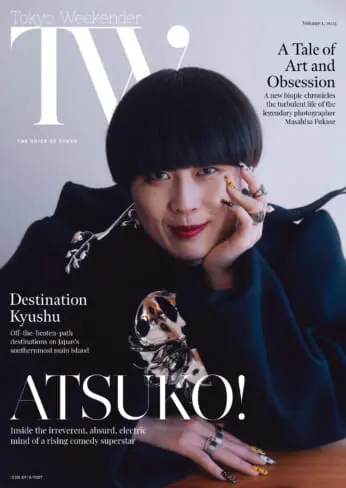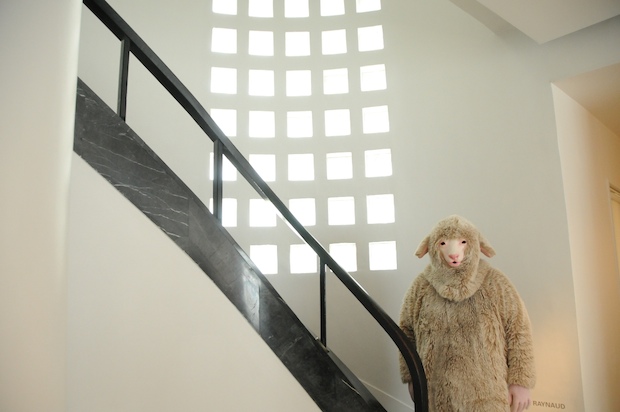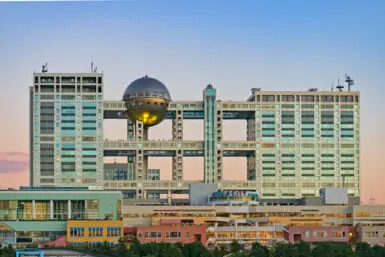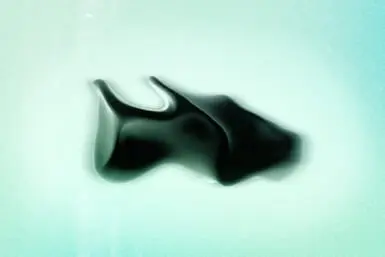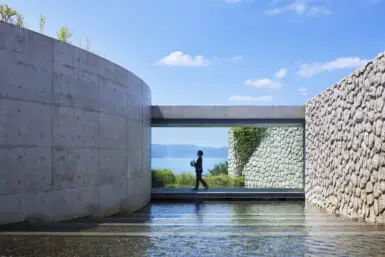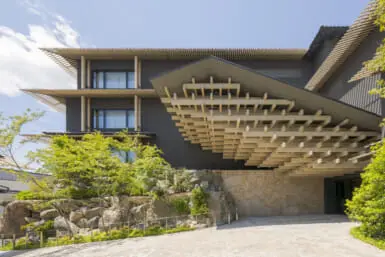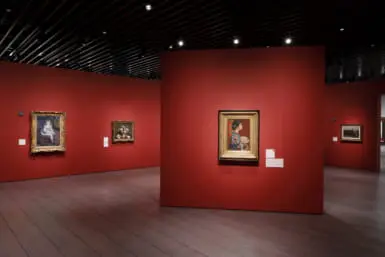You aren’t supposed to see a gallery. Or at least that’s the idea passed down from modernist tradition — the gallery should be less than a space, it should be an absence. Featureless white walls, simple square lines, nothing to detract attention from, or add unwanted aspects to, the artworks displayed there. The gallery is the empty white-space in which the art is presented so that it can exist without context.
But galleries and museums are, of course, very physical buildings. They are simply a different kind of context. And there are a few galleries that are notable for their character — the Hara Museum of Contemporary Art in Shinagawa among them.
Blank Musuem at Hara Museum of Contemporary Art
I’ve always enjoyed shows at the Hara. Even with its white-painted walls, it retains the clear form of a family house, albeit a large one. One room still contains the remains of a fireplace. Up the wooden stairs, several small gallery rooms were once bedrooms, and a tiny corner sun-room, off of what was likely the living room, still has big sunny windows.
So I was disappointed to discover that, now that the Hara is throwing a house party, I’ll be out of town.
Okay, it’s not really a party. But the museum is in between shows, and this week, from Thursday to Sunday, it will be holding an event called “Blank Museum” — a series of performances and films taking place in the otherwise empty building. Viewers are invited to stroll around and explore, enjoy the grounds and, of course, the art and lack-of-art.
The Hara building was built in 1938 as a private residence and turned into a contemporary art museum in 1979. The building itself was designed by Jin Watanabe, the man responsible for the Tokyo National Museum, and has undergone some renovations since then. As a result it’s an interesting mix of early 20th century Western style architecture that Watanabe is known for and the cool modern lines of more contemporary buildings. It’s gorgeous.
To add to that, there are permanent installation works such as Tatsuo Miyajima’s Time Link, Yoshihiro Suda‘s This Water Unfit for Drinking, and Jean-Pierre Raynaud’s L’espace Zero hidden throughout the place in unlikely corners. Discovering them feels like stumbling upon something clandestine — as though you’ve gone though a door marked staff-only and ended up in the back workings of the place.
The “empty” gallery is something of a pretense, of course. The performances and films mean that is really won’t be so different from a multimedia or performance exhibition. But still, it’s a good opportunity to see the building as itself, and to spend a summer evening roaming the halls and sipping a beverage.
There will also be sheep
In fact, there will be one particular sheep. The person in the sheep-suit is performance artist Sumiko Nogi, who will be there partially as performance art, partially to lead visitors from one event space to another. The sheep-suit is something that Nogi often uses in her work, and she looks at it as a reflection of human culture — sheep having followed us throughout history, but also affecting our own cultures in turn. But it also seems a nice topsy-turvy touch that the sheep will lead the humans on these midsummer nights at the art-less art gallery.
-Owen Schaefer
Twitter
Photography

Blank Musuem at Hara Museum of Contemporary Art
